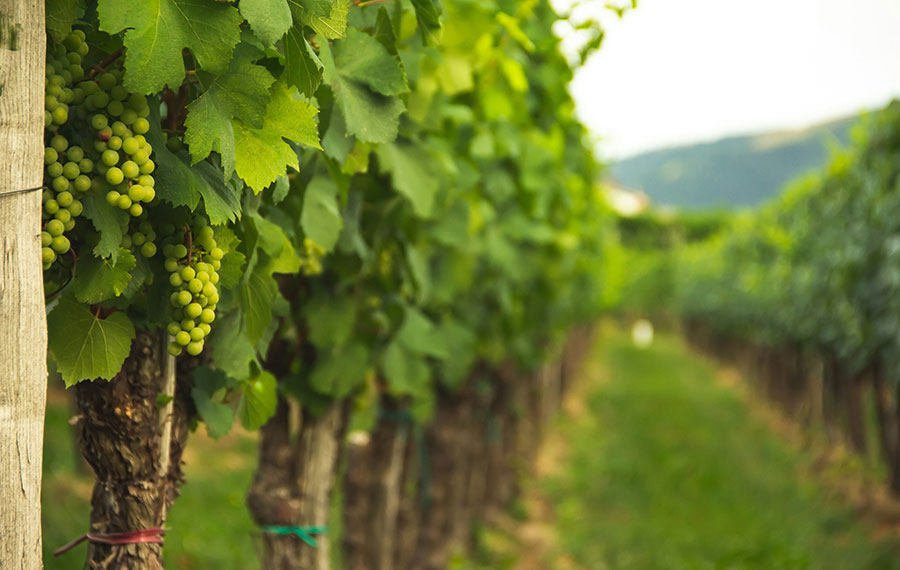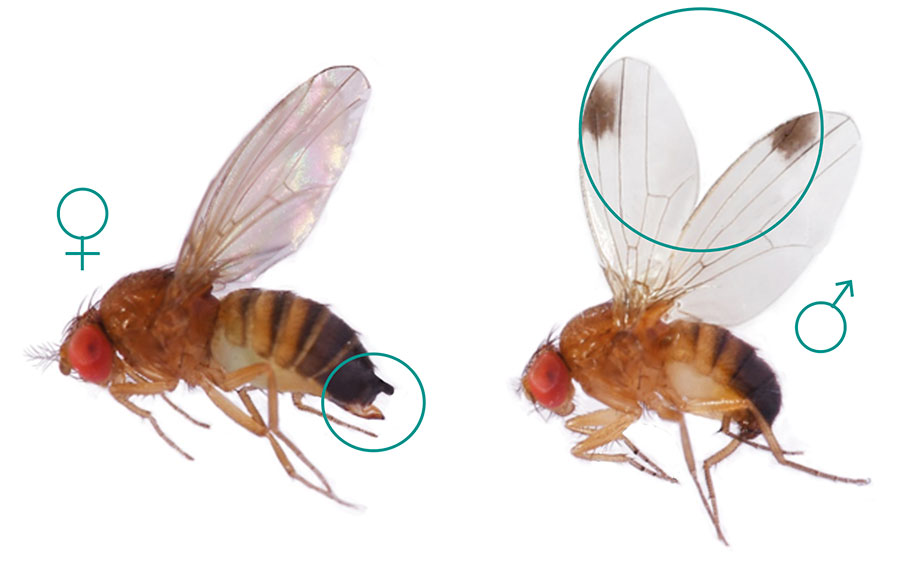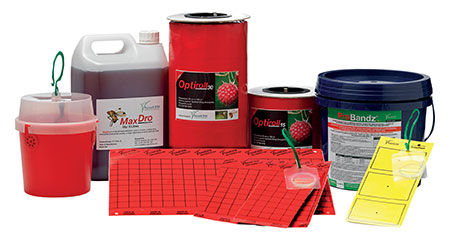Integrating pest management solutions against spotted wing drosophila
21st May 2024
Russell IPM experts Rachel Turner, Dr Clare Sampson, Dr Abuimroz Ali, Dr Dhurgham Al-Karawi, and Dr Rihem Moujahed give advice on how to spot and manage the risks of SWD.

Spotted wing drosophila (SWD) is now considered one of Europe’s most invasive alien pests.
SWD cause significant economic damage to a wide range of soft and stone fruits including grape, cherry, blackberry, strawberry and raspberry. This fly’s host range also extends over unlikely non-crop species such as ornamental and wild hosts. If left unchecked, these pests are capable of 100% crop loss.
Since being first reported in the UK in 2012, populations of SWD have expanded across most of the country and are predicted to increase. SWD are currently estimated to cause UK growers £20–30 million worth in crop losses per annum.
Spotting the problem
Fortunately, there are key physical characteristics that set SWD apart from other drosophilids. When male SWD are stationary they can be identified at first glance by a noticeable dark spot on each of their wings. Male SWD also possess two pairs of black tarsal combs on their forelegs visible under magnifying equipment. Female SWD do not possess these wing spots or tarsal combs so should be positively identified through magnification equipment. Females possess a large, serrated ovipositor (an organ used to lay eggs), used to puncture ripe and ripening fruit to deposit their eggs; the larvae then feed on the fleshy pulp within the fruit. The puncture wound allows secondary pathogens and other pests to attack the fruit, which enables SWD to significantly reduce yield before harvest.

Life cycle and behaviour
- SWD are reproductively prolific, achieving 13 generations per annum in favourable conditions.
- SWD can withstand cold winter temperatures and overwinter as adult flies
- Oviposition (egg laying) occurs between spring and autumn
- A single female can lay 7–16 eggs per day for 10–65 days
- An average female will lay 195 eggs in her lifetime
- Eggs hatch in 1–3 days
- Larvae mature in 3–13 days, feeding within the host fruit
- Larvae usually pupate in fruit but can drop off the host plant and pupate in soil
- Pupae emerge from 4–43 days depending on temperature.
Action plan
There are many research initiatives in development across the UK against SWD. Speak with your local advisor to discuss what options are available for you, these will include:
Careful consideration of crop variety – Some varieties of crops are more susceptible than others. Where possible, growers should consider crops that are less vulnerable to pests and diseases.
Monitoring pest populations – Monitoring pest populations is an integral part of any IPM strategy. Monitoring traps and devices can give an early warning to a potential infestation to allow a rapid and effective response to prevent infestations becoming problematic. SWD can and should be monitored throughout the year. Overwintering SWD adults reside in woodlands and dense hedgerows during winter months for shelter and when food is scarce. Trapping them here will help you to identify where they are migrating into the crop whist knocking back the population at their weakest. Place traps and lures at 10m intervals, 1m above ground level, preferably above wild hosts such as blackberry. Traps and lures should be added to the perimeter of the crop and monitored weekly from March to November to determine when SWD enter the crop. When SWD are present in the perimeter traps, more traps may be added inside the crop, 10m from the perimeter. It is also advised to monitor infestation levels of pre- and post-harvested fruit, details of which can be found on the AHDB website.
Know your site – Collect historical data to understand when and at what level SWD are migrating into the crop and from which locations. You can compare this data with temperature and humidity logs to help forecast timely interventions for pesticide treatments when or if necessary.
Staff training – Site hygiene is very important to greatly minimise the ability for SWD to grow within the crop. These hygiene interventions should include tighter harvest intervals “tight picking”. Damaged or fallen fruits should be discarded carefully away from the crop. A full management procedure for careful disposal of fruit can be found on the AHDB website.
About our experts
Russell IPM is dedicated to the development of innovative and dynamic IPM solutions compatible with biological control agents and spray programmes.

The SWD Dry Lure and MaxDro (liquid lure) are attractive lures for monitoring of SWD. The SWD Dry Lure is a versatile attractant that can be paired with the Red Impact Trap or hung inside the Suzukii Trap. MaxDro is a liquid attractant for the mass monitoring of SWD. It can be paired with the Suzukii Trap and SWD Dry Lure to maximise trap catch.
ProBandz is an effective food bait adjuvant which is mixed with insecticides to enhance the control of fruit flies such as SWD. It increases the uptake of insecticide which leads to a faster kill of the target pest with a much-reduced insecticide rate. It can be used with all authorised plant protection products and is applied to plants as a band treatment.
The Red Impact Board is a ready-to use, quick and effective monitoring tool for SWD when paired with the SWD Dry Lure. It comes with UV- light stable, high-tack adhesive for easy capture of SWD.
Powered by advanced AI, TruePest is a smart phone application and software suite that allows you or any of your team members to identify, count and record male and female SWD on Russell IPM TruePest sticky boards with a mobile phone device, in real time.
Visit Russell IPM for more details.
Read more fruit news
